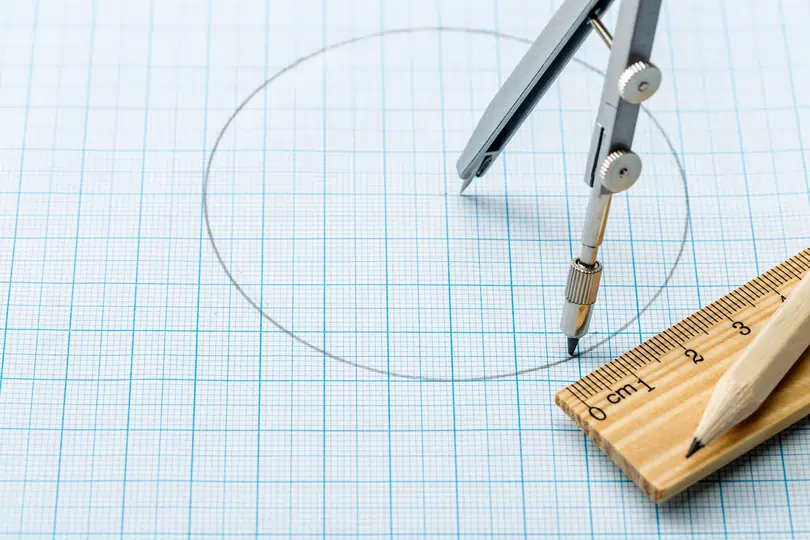Repeated Identity: Ratio Strategies
In this article, we will look into the strategies to solve the word problems on repeated identity.
Ratio Strategies
- Word problems on repeated identity - single item repeat
- Word problems on repeated identity - paired item repeat
This article is written keeping in mind the Primary 6 Maths students.
Word problems on repeated identity - Single item
We solve these problems by following the steps below:
Step 1:
Write down the two sets of ratio.
Step 2:
Identify the item that is repeated.
Step 3:
Make the units for the repeated item the same in the 2 sets of ratios by finding the common multiple.
Step 4:
Read the question carefully and assign a value to the units if necessary.
Step 5:
Solve for 1 unit if necessary and the question.
Practice questions: Repeated identity - Single item
Question 1:
The ratio of the mass of block A to the mass of block B is 11 : 5. The mass of block B is \(\frac{2}{7}\) the mass of block C. Find the ratio of the mass of block C to the total masses of blocks A, B and C.
Solution:
We will take the above-mentioned steps to solve this question.
Step 1:
A : B B : C
11 : 5 2 : 7
Step 2:
B is the repeated identity.
Step 3:
Make the units for B the same by finding the common multiple of 5 and 2.
A : B : C
22 : 10 : 35
In the question, we are asked to find Mass of C: Total mass of A, B and C
Mass of C = 35 units
Total mass of A, B and C = 22 units + 10 units + 35 units
= 67 units
C : Total Mass
C : A + B + C
35 : 67
Answer:
35 : 67
Question 2:
Xavier bought 50 kg of coffee powder and stored them in 3 containers. Container A contained 23 as much coffee powder as container B. The ratio of the mass of coffee powder in container A to the mass of coffee powder in container C was 3 : 5.
- What is the ratio of the mass of coffee powder in container A to the mass of coffee powder in container B to the mass of coffee powder in container C?
- Find the total mass of coffee powder in containers B and C.
Solution:
(a)
Container A : Container B
2 : 3
Container A : Container C
3 : 5
Container A is the repeated identity.
Make the units for Container A the same in the 2 sets of ratios by finding the common multiple of 2 and 3.
Container A : Container B : Container C
6 : 9 : 10
Ans: 6 : 9 : 10
(b)
Total mass of the coffee powder = 50 kg
Total number of units of container A, B and C
= 6 units + 9 units + 10 units
= 25 units
25 units = 50 kg
1 unit = 50 kg \(\div\) 25
= 2 kg
Total mass of coffee powder in container B and C
= 9 units + 10 units
= 19 units
= 19 2 kg
= 38 kg
Answer:
38 kg
Question 3:
James has 40% as many game cards as Sean. Sean has 80% as many game cards as Willie. James and Sean have 168 game cards altogether.
- What is the ratio of the number of games cards James has to the number of games cards Sean has to the number of games cards Willie has?
- How many game cards does Willie have?
Solution:
A tip: Convert the percentages to fractions in its simplest form and then allocate the units accordingly.
(a)
James has 40% as many as Sean.
40% =\(\frac{40}{100}\)=\(\frac{4}{10}\)=\(\frac{2}{5}\)
James : Sean
2 : 5
Sean has 80% as many game cards as Willie.
80% =\(\frac{80}{100}\)=\(\frac{8}{10}\)=\(\frac{4}{5}\)
Sean : Willie
4 : 5
Sean is the repeated identity.
Make the units for Sean the same in the 2 sets of ratio by finding the common multiple of 4 and 5.
Answer:
8 : 20 : 25
(b)
Total number of units of game cards James and Sean have
= 8 units + 20 units
= 28 units
James and Sean have 168 cards.
28 units = 168
1 unit = 168 \(\div\) 28
= 6
Number of game cards Willie have
= 25 units
= 25 6
= 150
Answer:
150 game cards
Word problems on repeated identity - Paired item repeat
We solve these problems by following the steps below:
Step 1: Write down the two sets of ratio.
Step 2: Identify the paired item that is repeated.
Step 3: Make the units for the repeated paired item the same in the 2 sets of ratios by finding the common multiple.
Step 4: Read the question carefully and assign a value to the units if necessary.
Step 5: Solve for 1 unit if necessary and the question.
Practice questions: Repeated identity - Paired item repeat
Question 1:
There were some yellow, green and red marbles in a box. The number of yellow marbles was 25 of the total number of marbles. There were thrice as many green marbles as red marbles. If there were 18 red marbles, how many yellow marbles were there in the box?
Solution:
Method 1:
Number of red marbles = 18
Number of green marbles
= 3 18
= 54
Number of yellow marbles =\(\frac{2}{5}\) of total number of marbles
Number of red and green marbles =\(\frac{3}{5}\) of total number of marbles
\(\frac{3}{5}\) of the total number of marbles
= 18 + 54
= 72
\(\frac{1}{5}\) of the total number of marbles
= 72 \(\div\) 3
= 34
Total number of marbles
= 34 X 5
= 120
Number of yellow marbles
= \(\frac{2}{5}\) of total
= \(\frac{2}{5} \) X 120
= 48
Answer:
48 marbles
Method 2:
Yellow : Total (Yellow + Red + Green)
2 : 5
But we want only Red + Green as we already have Yellow in the ratio above.
Yellow : Red + Green
2 : (5 - 2)
2 : 3
Given in the question that Green is 3 times of Red,
Green : Red
3 : 1
Green : Red : Red + Green
3 : 1 : 4
The repeated pair is Red + Green. Make the units for Red + Green the same in the 2 sets of ratios by finding the common multiple of 3 and 4.
Number of red marbles = 18
3 units = 18
1 unit = 18 \(\div\) 3
= 6
Number of yellow marbles
= 8 units
= 8 X 6
= 48
Answer:
48 yellow marbles
Question 2:
Chris, Dash and Enzo bought a present for their teacher. The present costs 5 times as much as what Chris paid. Enzo paid \(\frac{5}{7}\) as much as Dash.
- What was the ratio of the amount Chris paid to the amount Dash paid to the amount Enzo paid?
- If Dash paid $12 more than Chris, how much was the total cost of the present?
Solution:
(a)
Chris : Total (Chris + Dash + Enzo)
1 : 5
Chris : Dash + Enzo
1 : 4
Enzo : Dash
5 : 7
Enzo : Dash : Dash + Enzo
5 : 7 : 12
Chris : Dash + Enzo Enzo : Dash : Dash + Enzo
1 : 4 5 : 7 : 12
The repeated pair is Dash + Enzo. Make the units for Dash + Enzo the same in the 2 sets of ratios by finding the common multiple of 4 and 12.
Chris : Dash : Enzo
3 : 7 : 5
Answer:
3 : 7 : 5
(b)
Total number of units of Chris, Dash and Enzo
= 3 units + 7 units + 5 units
= 15 units
Difference in number of units between Chris and Dash
= 7 units - 3 units
= 4 units
4 units = $12
1 unit = $12 \(\div\) 4
= $3
Total cost of present
= 15 units
= 15 X $3
= $45
Answer:
$45
Question 3:
A group of friends, Peter, Queenie, Ray, and Sarah love to collect seashells. Peter had collected \(\frac{2}{5}\) of the total number of seashells everyone had. Queenie had collected 25% of the total number of seashells Ray and Sarah had collected. Sarah has collected 50% as many seashells as Ray. Given that Ray collected 85 seashells more than Queenie,
- What was the ratio of the number of seashells Peter had to the number of seashells Queenie had to the number of seashells Ray had to the number of seashells Sarah had?
- How many seashells did they collect in total?
Solution:
(a)
25% = \(\frac{1}{4}\)
Queenie : Ray + Sarah
1 : 4
50% = \(\frac{1}{2}\)
Ray : Sarah
2 : 1
Ray : Sarah : Ray + Sarah
2 : 1 : 3
The repeated pair is Ray + Sara. Make the units for Ray + Sarah the same in the 2 sets of ratios by finding the common multiple of 4 and 3.
Queenie : Ray : Sarah
3 : 8 : 4
Queenie : Ray : Sarah : Queenie + Ray + Sarah
3 : 8 : 4 : 3 + 8 + 4
3 : 8 : 4 : 15
Peter : Total (Peter + Queenie + Ray + Sarah)
2 : 5
Peter : Queenie + Ray + Sarah
2 : (5 - 2)
2 : 3
The repeated pair is Queenie + Ray + Sara. Make the units for Queenie + Ray + Sarah the same in the 2 sets of ratios by finding the common multiple of 3 and 15.
Peter : Queenie : Ray : Sarah
10 : 3 : 8 : 4
Answer:
10 : 3 : 8 : 4
(b)
Difference in number of units between Ray and Queenie
= 8 units - 3 units
= 5 units
5 units = 85
1 unit = 85 \(\div\) 5
= 17
Total number of seashells collected
= 10 units + 3 units + 8 units + 4 units
= 25 units
= 25 X 17
= 425
Answer:
425 seashells
Conclusion
In this article, we learnt about the single item repeat and the paired item repeat.
Identify the item(s) that are repeated and make the units for these items the same in the different set of ratios.
Keep practising to gain a thorough mastery of these concepts!
| Continue Learning | |
| Algebra | Distance, Speed and Time |
| Volume of Cubes and Cuboid | Fundamentals Of Pie Chart |
| Finding Unknown Angles | Number Patterns: Grouping & Common Difference |
| Fractions Of Remainder | Fractions - Division |
| Ratio | Repeated Identity: Ratio Strategies |


 SG
SG  VN
VN 


















